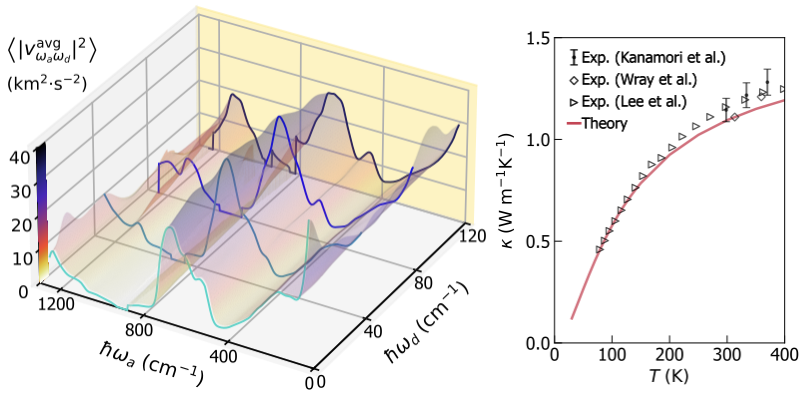Research Highlights
Thermal conductivity of glasses: first-principles theory and applications
Predicting how glasses conduct heat has proved to be a challenge for computational materials scientists, and yet it is of fundamental importance in many sectors. Microelectronics, construction, aerospace, optics and several other industries depend on making sure that glass materials behave as desired in various thermal conditions – be it freezing cold or scorching heat. So far, though, the simulation of these phenomena has proved very costly from a computational point of view, because it requires to model thousands of atoms simultaneously while failing to capture the full complexity of how heat propagates in glasses.
This work addresses the long-standing problem of predicting from first principles (i.e., without relying on any empirical parameter) the thermal conductivity of glasses. Specifically, the article presents a protocol that combines the Wigner formulation of thermal transport with computational techniques that allow to simulate glasses with quantum accuracy and at a computational cost reduced of several orders of magnitude compared to previous methods. Importantly, this work also sheds light on how the macroscopic thermal conductivity of glasses originates from the microscopic interplay between structural disorder, anharmonicity, and quantum Bose-Einstein statistics of vibrations.

The protocol has been used to calculate the properties on vitreous silica, an archetypal glassy material that has many commercial applications because of its resistance to heat and its refraction properties. Very recent studies have employed this protocol to investigate the physics of the thermal properties of amorphous alumina and gallium oxide gallium oxide, materials which play a crucial role in the thermal management of electronic devices.
This study opens new doors for optimizing and comprehending the behavior of glassy thermal insulators and promises to drive advancements across various industries.
Thermal conductivity of glasses: first-principles theory and applications npj Comput. Mater. 9 106 (2023)